JB TAK FODEGA NHI .... TB TK CHODEGA NHI .... (MAANG)
SQP9 Implementation LRU Cache
Design a data structure that follows the constraints of a Least Recently Used (LRU) cache.
Implement the LRUCache class:
Example 1:
Input:["LRUCache", "put", "put", "get", "put", "get", "put", "get", "get", "get"]
[[2], [1, 1], [2, 2], [1], [3, 3], [2], [4, 4], [1], [3], [4]]
Output: [null, null, null, 1, null, -1, null, -1, 3, 4]
Explanation:
LRUCache lRUCache = new LRUCache(2);
lRUCache.put(1, 1); // cache is {1=1}
lRUCache.put(2, 2); // cache is {1=1, 2=2}
lRUCache.get(1); // return 1
lRUCache.put(3, 3); // LRU key was 2, evicts key 2, cache is {1=1, 3=3}
lRUCache.get(2); // returns -1 (not found)
lRUCache.put(4, 4); // LRU key was 1, evicts key 1, cache is {4=4, 3=3}
lRUCache.get(1); // return -1 (not found)
lRUCache.get(3); // return 3
lRUCache.get(4); // return 4
Constraints:
- 1 <= capacity <= 3000
- 0 <= key <= 104
- 0 <= value <= 105
- At most 2 * 105 calls will be made to get and put.
Notes
Note: Zoom for Better Understanding
Approch
Basically we Degine the Data Structure that follow the Properties of the LRU in this problem we have a tuple of the finction
get function return the value of the particular key, if the key is not present into the ds retuirn -1 get(key)
put function used for the we gives the key and value and we put into the cache data structure put(key,val)
remove the least recent used guy and then we will Insert the our New pair
Implementation and Dry run into the Notes check outCode Zone!
Before Loking the Code...
Try by Your Self ...
.png)
.png)
Sb Mai He Kru ...
Khud Bhi Kr le Khuch ..... Nalayk
Time Complexity:O(N) Linear Iteration
Space Complexity:O(N) O(N) Stack Space.
Interviewer Not Happy with these Solution Becouse we used a Extra Space O(N) time to optimized the Approch
Optimized Approch
Prerequisite: Should have knowledge on the topics Hashmaps & DLL(Doubly Linked List)
While inserting the {key,val} pair into the DDL make sure that we are inserting it from the back tail to head.
The cache will tell us when the {key, value} pair is used/inserted.
Approach:
Size = 3
put(1,10)
put(3,15)
put(2,12)
get(3)
put(4,25)
Create a DLL and hashmap
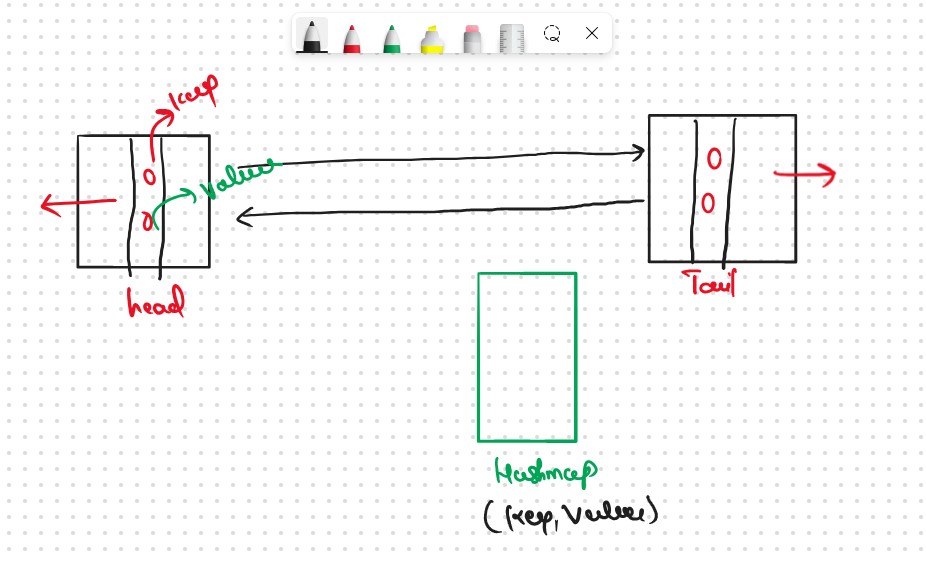
While inserting the {key,val}pair consider the following
Initialling Cache is empty so (n = 0) and (1,10) are not present in the Cache. It is a new element so we should insert it into the Cache.
Since n < capacity(0 < 3), so we can insert the pair.
Insert the pair({1,10}) right after the head.And store the {key,address of the node x} in the Cache.

Query 2: put(3,15)
Repeat the same process.
(3,15) is not present in the Cache and the size of the Cache (n = 1) is less than capacity 3.
Insert the pair(3,10) right after the head and store the address of that node in the Cache with its key value.
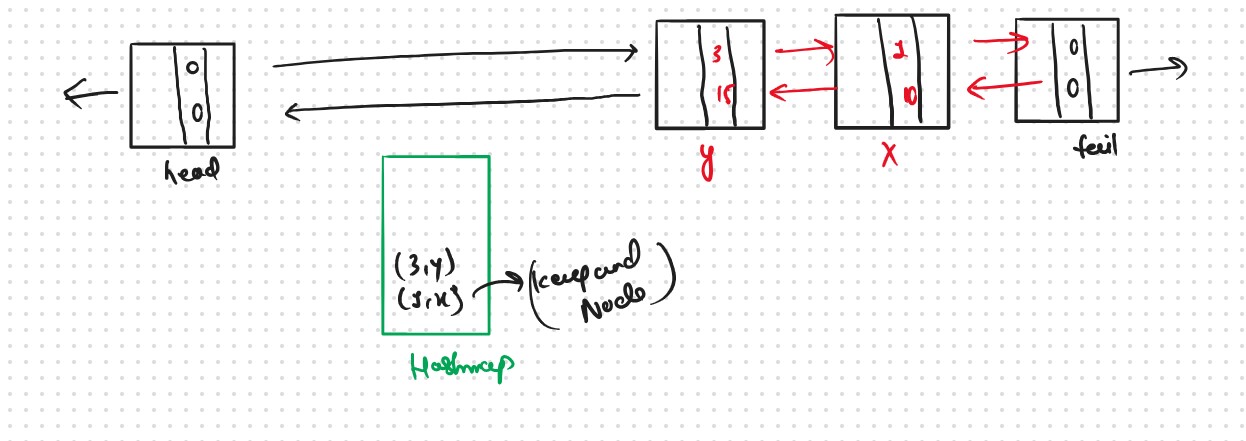
Query 3: put(2,12)
Repeat again. check if (2,12) Is present in the Cache.
No, it’s not present in the cache so now check for the size Cache size is 2 < capacity(3).so insert the pair right after the head.
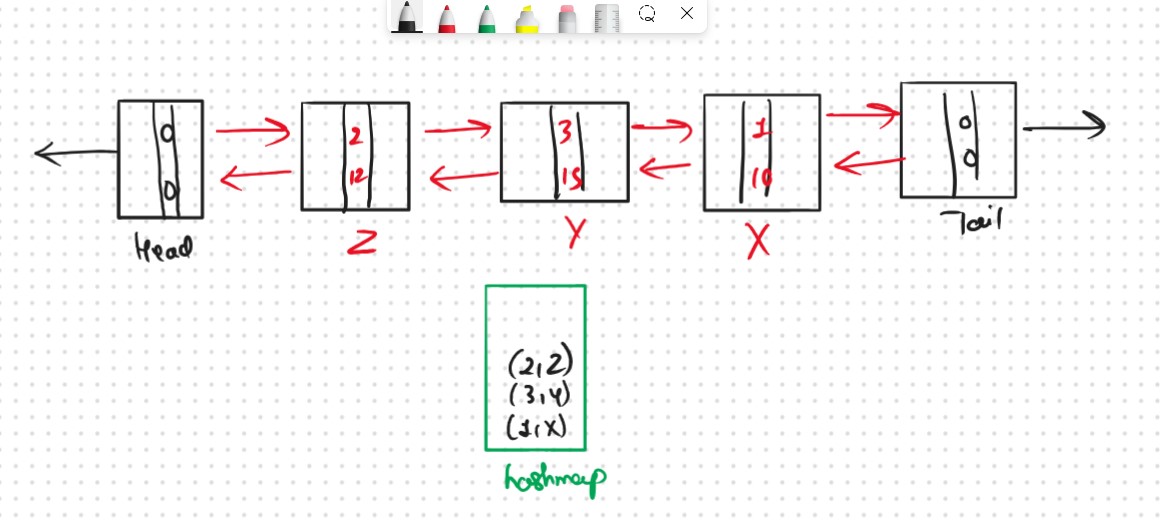
Query 4: get(3)
Check if the value is present in the cache. Yes, 3 is present in the cache so take the address of the node(Y) and output the value which is present in that node.
Now the most recently used should be changed because the flow is from head(most recent) to tail(least recent).
Delete the node and add that node right after the head. Since the node is moved to a new address update the address of the key in the cache.
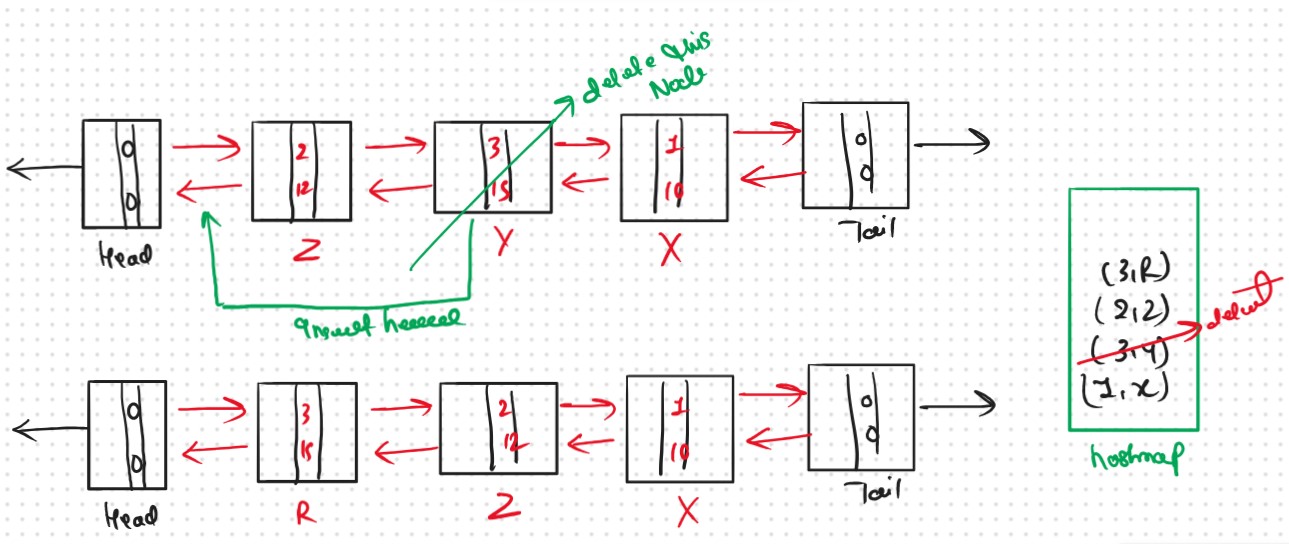
Query 5: put(4,25)
Check for the size of the cache n = 3 which is equal to capacity so we have to remove the LRU which is present right before the tail.
Before removing the node delete the pair{key, node} of that node present in the cache.
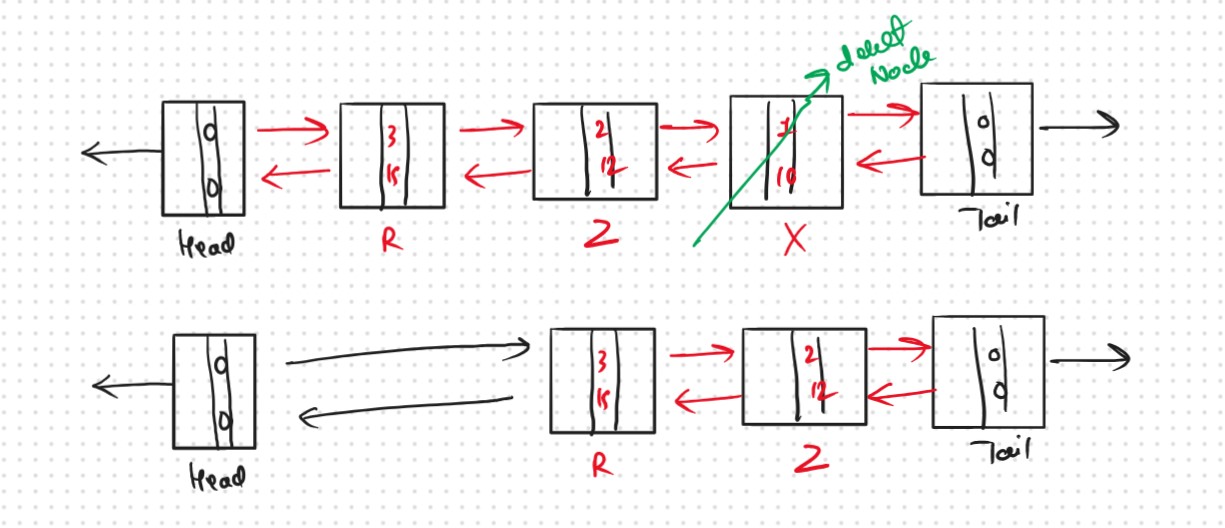
Now the size of the cache will be 2 now we have space to insert the pair(4,25).
Take (4,25) right after the head and take the address of the node(s) and insert it into the cache.
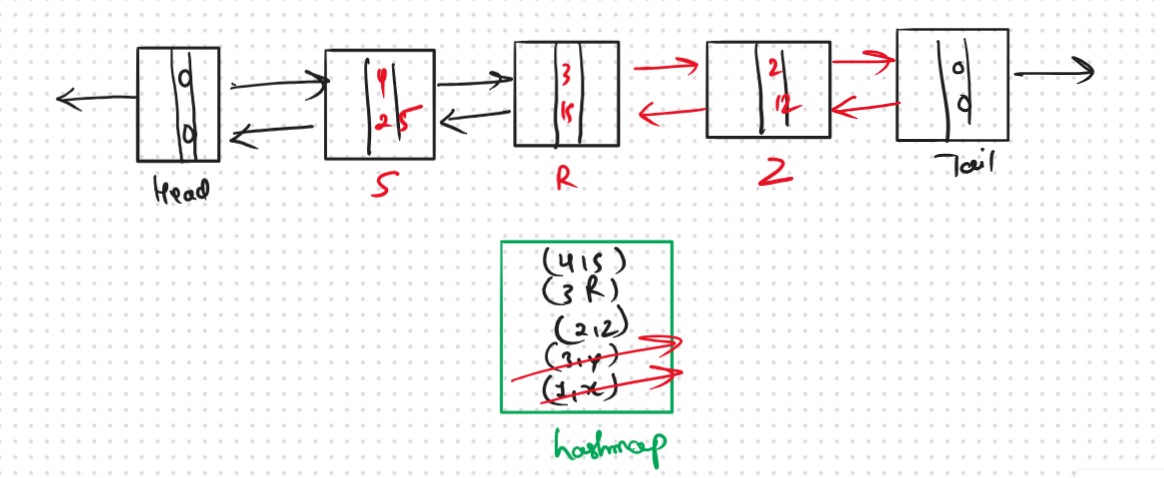
Code Zone!
.png)
.png)
Sb Mai He Kru ...
Khud Bhi Kr le Khuch ..... Nalayk
Time Complexity:O(N) Linear Iteration
Space Complexity:O(1) Becouse we can not used a any further data structure for our answer.














